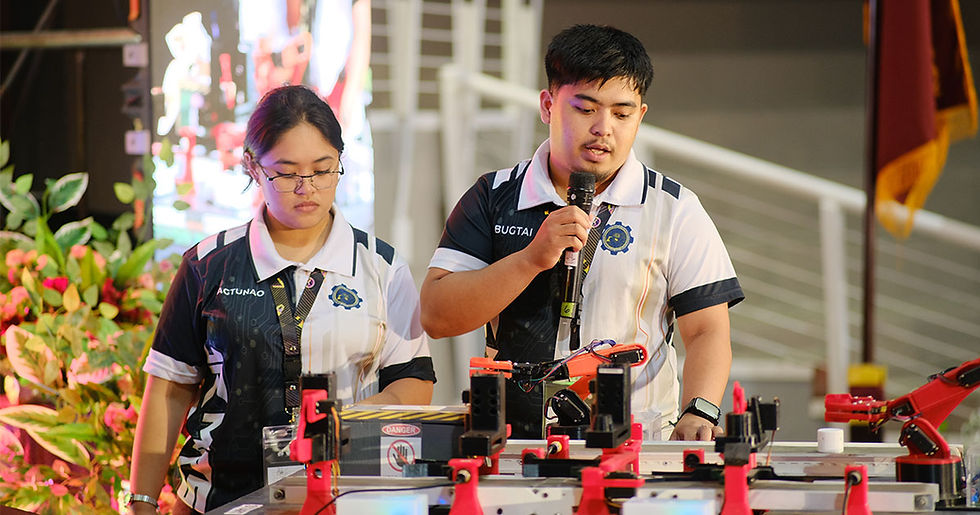Blasting into the future - from Iraq
- Field Ready
- Dec 17, 2020
- 3 min read
Updated: Dec 18, 2020
As a 10-year-old girl in Iraq, Diana Alsindy watched her grandfather weld metal plates in a small, backyard machine shop behind their home in Baghdad. She knew then she wanted to help design and build machines - and her passion for engineering was born.
It's a passion that has had her literally shooting for the moon as a rocket designer and propulsion development engineer. She's currently working with Virgin Orbit as part of a team responsible for LauncherOne’s Stage Systems design, operation and testing.
Alsindy appeared as a featured speaker recently via Zoom at Field Ready-supported Mosul Space as part of a series of presentations that feature inspirational, successful Iraqi innovators.

And that passion has carried her to previously unexpected places for a little Iraqi-American girl; after working at the National Aeronautics Space Administration (NASA), Alsindy went on to work with multiple aerospace companies, including Northrop Grumman and Space Micro designing, testing and analyzing propulsion systems on liquid propellant rockets.
As one of the first Iraqi women to work as a rocket scientist, Alsindy discussed her background, studies and work in the rocket field - as more than 270 people listened to her outline the steps she took to build her trajectory. After emigrating to the U.S. at age12, Alsindy earned her B.S. in chemical engineering from the University of California, San Diego in 2017 and immediately aimed her sights at not just the rocket-design field but at youth science education.
Alsindy also founded @TheArabianStargazer (www.instagram.com/thearabianstargazer/) in 2018, a bilingual educational platform that promotes STEM to Arab youth around the world. Alsindy hosts virtual classes with schools that don't have access to engineering resources and uses humor and props to explain science and space. She also talked about her goal to develop a Middle East-based student camp equipped with resources, materials and opportunities for students to learn tangible skill-sets about engineering and science.
Alsindy is just one of the inspirational featured speakers at the Mosul Space series. In early December, Dr. Ali Al-Assam spoke to participants about his experiences as one of the programmers who worked on the first Arabic publishing program for the Kentosh system (the first computer operating system from Apple).

Al-Assam is the founder and chief executive of NewsSocial, a community social media/news platform, and is the former CEO and chairman of KnowledgeView, a media company bridging both the European and Middle-East spheres. He earned his bachelor's degree in electrical engineering from Cardiff University, a master's degree in nuclear physics from London South Bank University and a doctorate in magnetic domains from Thames University. He did four years of post-doctoral optical fibers research at Imperial College in London before moving to digital programming systems. During the Zoom session, Al-Assam discussed his 30 years in technology and business roles - and talked about how he used knowledge-based systems to establish Mushtarek, a social enterprise platform designed to support Iraq's socio-economic development. His wide variety of experiences inspired Al-Assam to establish Diwan with colleagues as a scientific cooperative in Britain in 1982. His work - showing that Arabic could also be a strong "narrative voice" for technology - helped spark the Arab world's desktop publishing revolution.
And brainstorming sessions with friends resulted in other well-known successes - such as translating Apple's initial Macintosh OS to Arabic and helping to create Apple's first Arabic publisher software, which opened brand new avenues for millions of Arabs. By focusing on how ideas can benefit an audience, Al-Assam emphasized that anyone with drive and dedication can push to overcome hurdles and break new ground.
The Mosul Space speaker program also featured an earlier session with OHMIO founder Mohamed Hikmat; OHMIO is the first company to use 5G technology in its autonomous vehicles and also used 3D printing technology to manufacture the body of its LIFT vehicle.
Stay tuned for more inspirational speakers in the New Year!

_edited.png)




Comments